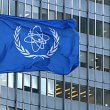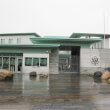All Israel News Staff | August 7, 2022
By Sunday evening, the Palestinian Islamic Jihad terrorist group had launched more than 585 rockets and mortars into Israel from the Gaza Strip.
Of these, 115 – or about 30% – are believed to have fallen short landing in Gaza, while 470 crossed into Israeli territory.
But of those that crossed into Israeli airspace, approximately 200 Iron Dome defense-system interceptions took them down demonstrating a 97% success rate, the Israel Defense Forces reported.
The Iron Dome intercepted projectiles fired toward populated areas.
Last May, saw more than 4,300 Palestinian rockets fired from Gaza, with at least 1,500 targeting heavily populated areas in Israel, including Tel Aviv and some reaching Jerusalem suburbs.
The Iron Dome showed itself an effective countermeasure then as well, shooting down more than 90% of those rockets and greatly reducing the potential death toll. Even so, about a dozen Israelis were killed from the attacks.
In an earlier onslaught, in May 2019, Hamas and other Gaza-based terrorist groups fired 600 rockets at Israel.
Both then and now, the casualty number could have been much higher without the Iron Dome.
WHAT IS THE IRON DOME? AND HOW DOES IT SAVE ISRAELIS AND PALESTINIAN LIVES?
The Iron Dome is a ground-to-air missile-defense system developed by two Israeli firms with support from the U.S. The Iron Dome consists of three components: a radar that detects incoming rockets, a command-and-control system for determining the threat level and an interceptor that activates if the system determines that human lives or infrastructure are at risk. The system ignores incoming rockets it deems not a threat.
The Iron Dome also effectively saves Palestinian lives as it gives Israel a defense option, rather than requiring preemptive offensives as a rule against the terrorists who tend to situate themselves within highly populated civilian enclaves. Israel’s citizens have to stay ready to run into bomb shelters, but the Iron Dome intercepts many of the incoming rockets and reduces the immediate need for ground incursions, which would cost a great numbers of lives.
The Iron Dome interception success rate has improved gradually since its introduction in 2011, when it managed to shoot down 75% of the incoming projectiles. During Operation Protective Edge in 2014, the system’s success rate reportedly rose to 80%, and last year’s Operation Guardian of the Walls saw a 90% success rate.
The IDF launched this weekend’s “Breaking Dawn” operation against PIJ targets on Friday, reporting an immediate threat by the group against Israeli communities.
The operation began with the assassination of Tayseer al-Jabari, the PIJ’s northern commander, who IDF spokesman Ran Kochav said was “responsible for the concrete threat in the last three, four days to fire anti-tank missiles and mow down Israeli civilians or soldiers in the Gaza-border area.”
In spite of the use of the Iron Dome, some rockets have hit populated areas, causing damage and some minor injuries. One home in an Eshkol Regional Council town took a direct hit in a Sunday morning rocket barrage; the council’s security department reported that, while the home was damaged, the family was taking shelter in the home’s reinforced room at the time of the attack and emerged unharmed.
Over the past decade, the Iron Dome has been used extensively against rockets, mortars and, more recently, small drones. Though IDF officials have stressed that the defense system is not unbeatable, its past use has been credited with saving many lives in Israel.
Israel hopes to partner with the U.S. further, employing the Iron Beam laser system, which is now being developed by the weapons manufacturer Rafael Advanced Defense Systems, an Israeli company.
The system is meant to complement the Iron Dome by targeting smaller projectiles and leaving larger ones for the missile-based batteries.










